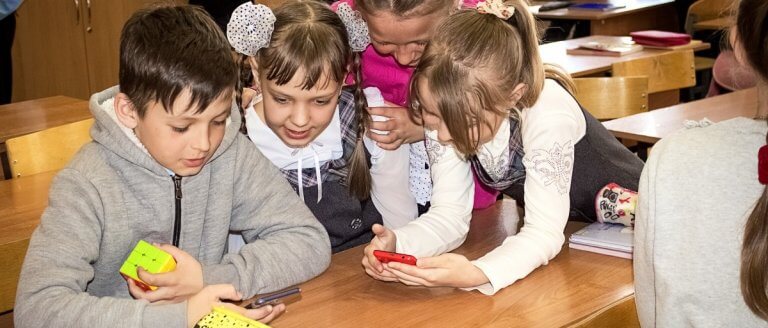
Smartphones are society’s latest addiction. But students at San Lorenzo High School in California have no way of feeding this addiction. Since last year, they have reportedly had their mobile phones locked in pouches by Yondr from 8am until school lets out at 3.10pm, every day.
Used to prevent fans at comedy clubs from taping shows or posting Facebook updates during standup performances, the form-fitting lockable pouches found their way into the education sphere across thousands of schools in the United States, Canada and Europe. Just like the comedy clubs and concert venues, schools aim to target students more absorbed in their phones than what’s being written on the board.
“There are so many studies that have come out in the last few years on the social anxiety, stress, low self-esteem, teen suicides are up – Studies have shown how disruptive these devices can be, [and] not only the devices itself, but the social media aspect of it,” Allison Silvesti, Principal at San Lorenzo told CNBC.

Unhappiness is on the rise thanks to smartphone and social media use, research has found. Source: Shutterstock
Smartphone use among children and adults is booming all over the globe. A Pew Research Centre study last year found that 95 percent of teens can get their hands on one these days, with 45 percent claiming to use it constantly. While Facebook use is down from 71 to 51 percent, a sizable majority said they have shifted their attention to other social media platforms such as YouTube, Instagram and Snapchat.
“Smartphone ownership is nearly universal among teens of different genders, races and ethnicities and socioeconomic backgrounds,” the report said.
For all the hype surrounding EdTech’s potential benefits in classrooms, the general consensus on mobile phones tends to fall towards the negative. San Diego State University Professor Jean Twenge found that smartphone and social media use coincided with the spike in the rise of teens’ feelings of uselessness, as well as with the fall of their satisfaction and happiness.
In Australia, the New South Wales government has ordered the country’s first review of the “risk versus reward” of mobile phone use once inside the school gate. France has a ban of mobile phone use in school premises, while UK culture secretary Mark Hancock called for a similar ban last June.
What’s seen as a weapon of mass disruption and bad parenting in some places, however, is actually an effective teaching tool in others.
In Montreal, for example, educators are experimenting on ways to integrate smartphones in and outside of the classroom in novel and creative ways. Working with researchers, high school art teachers and about 300 students used Instagram as “a private, closed network accessible to only teachers and students”.
Teachers post visual prompts (images) called “Missions” – exploring themes of “self,” “my school” and “my surroundings” – and students are invited to respond through a smartphone photograph.
Exploring the sights and sounds of #Montréal through a #smartphone art project: https://t.co/T7et2nQRhe
(via Ehsan Akbari of @CU_FineArts)— The Conversation Canada (@ConversationCA) January 31, 2019
“What we experienced was consistent with earlier research: sharing from their different perspectives and locations heightened the students’ desire to be connected at school and their sense of personal involvement in their learning,” Ehsan Akbari, a PhD candidate at the Department of Art Education, Concordia University wrote in The Conversation.
“And, through sharing their own images, the students created a peer-learning network, in which they could teach and learn from each other by taking and sharing images online.”
What the experiment in Montreal suggests is that the solution to mobile phone use may lie in achieving balance. Limited usage is key, which explains why Twenge isn’t entirely anti-smartphone.
“This is not about taking the phone away. They are wonderful devices, but it’s limited use,” she says, especially for teens. “Make sure the phone doesn’t become an appendage.”







